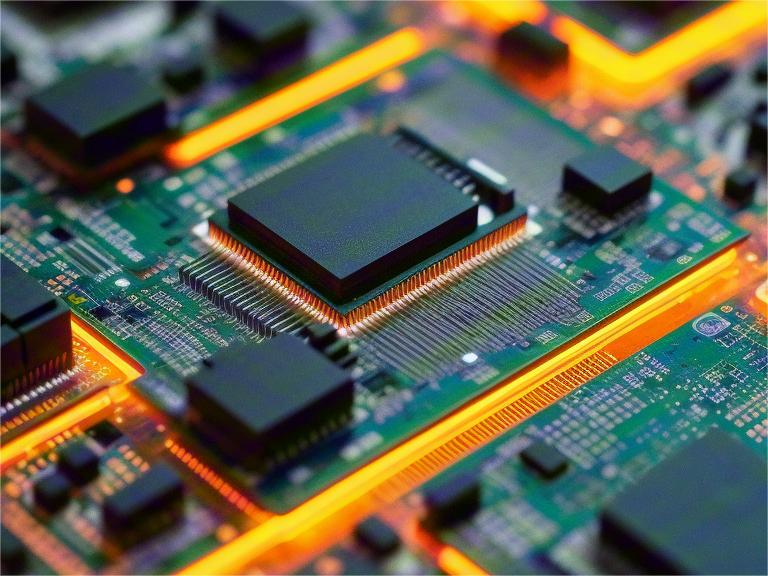In printed circuit board (PCB) design, there is an increasing trend toward creating PCBs for high-performance applications. This has led to an exponential rise in power density. As the power consumption of PCBs increases, the heat generated within the board also rises. This creates a critical need for managing the heat generated in PCBs. Additionally, certain applications require PCBs to operate in high-temperature environments, where significant amounts of heat need to be managed and transferred effectively.
Traditional PCBs have relatively low thermal tolerance, and reaching the highest operating temperatures can negatively affect their performance. Prolonged exposure to high temperatures can cause irreversible damage to both the PCB and its components. The longevity of electronic devices, including the PCBs they contain, largely depends on how well the thermal load is managed. This is a crucial consideration for manufacturers when designing PCBs for applications in the automotive industry, LED lighting, and alternative energy systems. In these applications, embedded PCBs often endure higher temperatures compared to standard laptop circuit boards.
What is a High-Temperature PCB?
A high-temperature PCB is a type of printed circuit board that is made from materials with a glass transition temperature (Tg) higher than 170°C. The glass transition temperature (Tg) refers to the temperature at which a material transitions from a rigid, brittle "glass state" to a more flexible, rubbery state. In practice, it is recommended that the design of a PCB should be capable of withstanding continuous thermal loads at temperatures up to 25°C below its Tg. For applications where the PCB will operate at temperatures of 130°C or higher, the use of high-Tg materials is highly recommended.
High-Tg materials possess excellent thermal resistance, low thermal expansion, and greater durability against delamination. In PCB manufacturing, the most commonly used material is glass-reinforced epoxy laminate, such as FR4. FR4 is made up of woven glass fiber and a flame-retardant epoxy resin adhesive. Standard FR4 has a Tg range of 130–140°C. However, for high-temperature applications, high-Tg FR4 is a better choice. High-Tg FR4 not only offers superior thermal resistance but also provides enhanced moisture resistance.
Material Considerations for High-Temperature PCBs
When designing PCBs for power components or other heat-generating devices, one of the most popular solutions is to use a PCB with a metal core to prevent overheating. Insulated Metal Substrate (IMS) PCBs, also known as Metal Core PCBs (MCPCB or IMPCB), are an option for high-temperature designs. The use of a metal core with a larger surface area helps dissipate heat more efficiently. In designs with metal-core PCBs, it is essential to pay attention to the vias drilled underneath the power or other heat-generating components, as these vias help in heat transfer.
Compared to traditional PCB technologies, using a thicker metal core with vias will facilitate greater heat dissipation. This is because the vias can utilize the thicker metal core for better heat conductivity. As previously mentioned, Insulated Metal Substrates (IMPCBs) are an excellent option for high-temperature applications where power components are involved. In this design, a thin layer of glass or resin insulates the metal core, preventing heat from being redistributed back to the electrical components on the PCB. Instead, the heat is conducted through the core and dissipated into the surrounding atmosphere.
IMPCBs are commonly used in applications that require high power handling, such as power supplies, LED lighting, and automotive electronics. These applications require robust heat management solutions to ensure the reliability and longevity of the device.
Thermal Management: A Key Consideration in High-Temperature PCB Design
From what we have discussed so far, it is clear that material selection is a crucial element in designing high-temperature PCBs. However, material alone cannot compensate for poor design choices along the way. When designing PCBs for high-temperature environments, thermal management must also be a primary consideration. Efficient heat dissipation is vital to prevent overheating and ensure the long-term reliability of the PCB and its components.
There are various techniques used in thermal management, such as the use of heat sinks, thermal vias, and copper pours, which can help to further enhance the heat dissipation capacity of a PCB. The strategic placement of these thermal elements ensures that the heat generated by high-power components is effectively transferred away from sensitive areas of the PCB, thus preventing heat-induced failures.
In conclusion, designing PCBs for high-temperature environments requires careful consideration of both material selection and thermal management strategies. High-Tg materials such as high-Tg FR4 and IMS technology provide excellent solutions for managing heat in demanding applications. Manufacturers must ensure that the thermal load is carefully managed throughout the life of the device to ensure optimal performance and longevity, especially in critical applications like automotive, LED lighting, and renewable energy systems.




